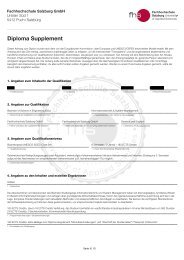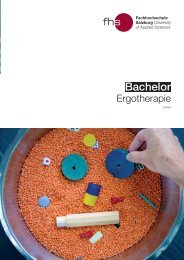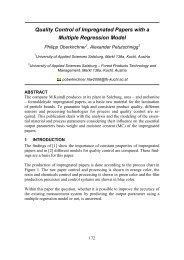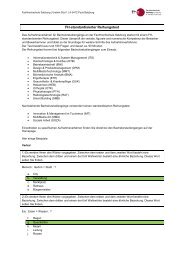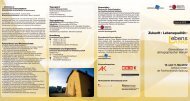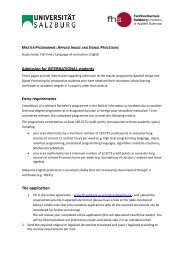Tannin-boron wood preservatives.
Tannin-boron wood preservatives.
Tannin-boron wood preservatives.
Create successful ePaper yourself
Turn your PDF publications into a flip-book with our unique Google optimized e-Paper software.
6<br />
CIMAD 11 – 1º Congresso Ibero-LatinoAmericano da Madeira na Construção, 7-9/06/2011, Coimbra, PORTUGAL<br />
species that are not easy to penetrate. In some extreme case of penetration (e.g. spruce), heat can<br />
be applied. Temperature, indeed, has a double effect: at the beginning it decreases the viscosity<br />
and activates the tannin-hexamine crosslinking process and so the shelf-life of the formulation<br />
decreases fast.<br />
3.2. Mechanical Properties<br />
Beech and scots pine samples assume a different aspect after tannin-<strong>boron</strong> treatment.<br />
The most apparent changes are the darker color, the smoother surface and the more rigid<br />
aspect. The presence of the tannin-hexamine resins in the <strong>wood</strong>en structure gives a more<br />
consistent aspect to the whole structure.<br />
The quantification of this mechanical property is fundamental to consider the tannin-<strong>boron</strong><br />
formulation applicable to <strong>wood</strong> for exterior grade applications. For this reason, compression test<br />
and hardness measurements have been done.<br />
Figure 4- Compression strength in function of tannin impregnation.<br />
Fig. 4 represents the percentage of strength performance increase in compression resistance<br />
when tannin solutions are cross-linked into the <strong>wood</strong>en structure.<br />
The most immediate result is the general increase of resistance. In case of beech, the penetration<br />
of the tannin formulation is proportional to the concentration of tannin in the impregnation solution.<br />
This information suggests a homogeneous distribution of the resin and explains why the<br />
mechanical properties are proportionally increased. This increasing is significant and takes even<br />
more value considering that beech is around 70% more resistant to compression than scots pine.<br />
Also for treated scots pine samples the resistance to compression increases. The solution of<br />
10% of tannin penetrates deeply and produces a homogeneous distribution of the network after<br />
curing. In this case the mechanical resistance achieved is really high (around 35%).<br />
Unfortunately, when the viscosity of tannin becomes slightly higher, the penetration in scots pine is<br />
not complete and the distribution of the resin is less homogeneous. The mechanical resistance is<br />
still higher, but there is not proportionality between tannin used and strength increase.<br />
Eventually, scots pine can be also reinforced with a tannin-hexamine formulation, but in these<br />
cases lower concentrations are suggested.<br />
Anyways, this increase is always significant and this treatment can be considered not only as an<br />
innovative and eco-friendly solution to increase durability, but also as a method to get the <strong>wood</strong><br />
more resistant for building construction.<br />
Brinell hardness investigates the surface properties of the <strong>wood</strong> samples. Fig. 5 reports on the<br />
trend in surface hardness for beech and scots pine in relation with tannin-hexamine treatments.




